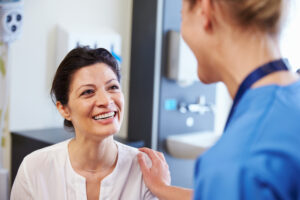 The day has arrived. Surgery day.
The day has arrived. Surgery day.
What is it like?
This is a typical surgery day for one of my patients. I operate in a free standing AAAA certified center. It is small, so it is a different experience than going to a big hospital like Stanford or Sequoia. I am very hands on, so I will see you prior to you getting any kind of sedation or going back into the OR. My center is dedicated to plastic surgery only.
The morning of surgery you go to the center. You have not had anything to eat or drink after midnight.
What should you wear? Comfortable, loose clothing that is easy to get on and off. A shirt that zips or buttons up is great. Wear stuff you don’t care about, in case you get blood or other things on it. Shoes you slip in and out of like slippers or clogs. Do not wear jewelry, makeup, or contacts (wear glasses if you need them).
What should you bring with you? Check with your surgeon. For me, I like my patients to have their medication with them for the drive home in case they get nauseous or have pain. Otherwise, you don’t need anything. All the garments and dressings I bring with me.
What happens when I get there? A nurse will have you change into a gown. They will then ask you a bunch of questions (what medication do you take? do you have allergies? etc). They will check your blood pressure and temperature. We have our patients get under a warming blanket (it feels nice, and has benefits to your healing from surgery BLOG).
When do I see you, Dr. Lauren Greenberg, my plastic surgeon? You will see me after the nurse is done checking you in. I will review the surgery and do markings on you (Yup. Just like on the TV shows). This is a time to ask any questions. Remember to breathe.
Then you see the anesthesiologist. In my practice they are all board certified MDs. They talk with you again about your health history, then start your IV to give you fluids (don’t worry! they are pros!), and usually give you a medication to relax you.
Then into the OR. We will move you to the surgical bed. We hook you up to tons of monitors- blood pressure, pulse ox (to see your oxygen level in your blood), EKG leads. We put squeezy booties on your legs, called sequential compression devices. These massage your legs during surgery to help prevent blood clots. There is padding under your arms and feet, and a pillow behind your knees. You then breathe oxygen. The medicine we use to help you fall asleep goes through your IV.
Who is in the OR? Me, your surgeon. An anesthesiologist (MD, whose only job is to watch all your vital signs). A scrub tech (who assists me in surgery by handing instruments). A circulating nurse (who gets us things we need like suture, as we are scrubbed into surgery and sterile.)
When you wake up, you will be in recovery. There a nurse is near your bedside to help you if you have pain or nausea. You are connected to monitoring equipment constantly. The nurse is certified for advanced cardiac life support. The recovery room is equipped just like one in a hospital. Gradually over the course of an hour, more if you need, you become more and more awake. The nurse will sit you up. No ice chips or other things until you are awake. When ready to go, you will get dressed (with help) and we transfer you to a wheelchair to take you to your car, where a trusted person (friend, family) will take you home.
Once home, you will likely sleep most of the day. Surgery is like running a marathon, and you need to rest. You need someone with you- a family member, friend, or nurse- after surgery for the first night because you have been sedated.
The information provided on this website is for general informational purposes only and does not constitute medical advice, diagnosis, or treatment. Always seek the advice of a qualified healthcare provider for any questions regarding your health or medical condition.
